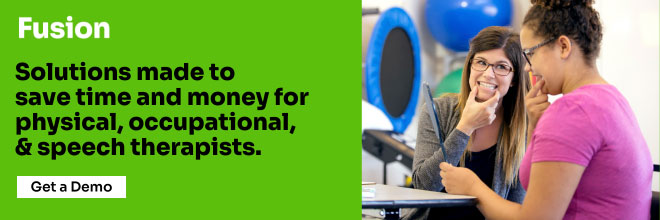As with any therapy discipline, occupational therapists want the best for our patients, not only when it comes to short-term interventions, but for healthier lives long-term. Of course, the key to this success (and the challenge) comes from forming long-term habits in occupational therapy interventions. But the old saying goes you can lead a horse to water but you can’t make it drink. So, how do we help our patients develop healthy, long-term habits?
The Science (and History) of Habit Formation
You’ve probably heard statistics about how habits require 15, or 30, or 60 days of pure willpower, and then poof you’ve developed a habit. The bad news is, it’s a little more complicated than that. The good news is, with an understanding of the science behind habit formation, long-term habits in occupational therapy are easily attained and maintained.
Humans are creatures of habit. The ability to develop habits is an evolutionary advantage formed over millions of years to help us survive. The dopamine centers in our brain rewarded our primordial ancestors for accomplishing tasks that benefit us – like finding food. “Hacking” these primordial dopamine channels (shout out to Pavlov and his pups) can make forming healthy long-term habits nearly as easy as unhealthy ones.
Lights and Whistles
Sensory cues grab our attention, helping us break old, conditioned patterns and start something new. Pavlov used a bell to train his dogs, and trainers today still use clickers. Our phones, too, light up and chime and offer the stimulus we need to keep that delicious dopamine flowing. Luckily, this can be incorporated into our therapy practice. Bright-colored sticky notes, chimes from automated reminders, and more can help shake up old, conditioned habits so new ones can take their place.
Schedule a demo of Fusion today!
Out with the Old, In with the New
One of the best ways to do away with an old habit is to replace it with something new. (Think chewing gum to resist cigarette smoking.) Brainstorm unhealthy habits that can be modified with your client to find small swaps they can make in their life for positive change. Maybe consider swapping a traditional desk with a standing version or suggest switching the lunchtime re-run binge with a dog walk.
Introducing Moral Neutrality
Speaking of brain hacking, a phenomenon occurs in our brains when we are told we are doing something “bad”. We continue to do it! This is due to a chain of self-deprecating thoughts and hopelessness. A first step to breaking bad habits and introducing good ones is to stop referring to them as such.
Working With Neurodivergence
Of course, not all brains work alike, and not all dopamine centers do either. Clients with ADHD, dyslexia, autism and other neurodivergence will possibly require a different approach. Consider asking if they’ve been diagnosed with these in the past so you’re able to get a jump on how you can be most supportive of their unique needs.
Take Stock of the Environment
Sometimes, we forget that our patients live in complex ecosystems. Outside of our office, with work lives, relationships, home environments, etc. many factors could detract from the success of therapy and the formation of healthy habits. For example, a single mother of three school-age children who is busy with sports, parent-teacher meetings, and getting dinner on the table may struggle to find the time in which to do at-home exercises. Likewise, a high-power executive can make every positive effort, but without considering his frequent travel, you won’t see any long-term success.
Before beginning with interventions, take the time to get to know your patients. Ask what a typical day looks like. Make friendly conversation and gather as much information as possible about their environment. Before making headway with treatment, make sure to address any hindrances to their success. Help them find solutions that fit the constraints of their time and treasures.
Accountability Systems
Creating new habits is hard, largely because it requires the often-unnoticed effort of breaking old, less-healthy habits. So, a person’s willpower to start a new routine will likely be met with temptation from old ways. Since a burden shared is a burden halved, an accountability buddy can help your OT client develop long-term habits. When your patient comes in with a spouse or parent, make sure you’re providing them with the education and insight they need to be a strong support system for your patient.
Suggest Another Kind of Therapy
Our physical bodies are incredibly complicated, but our emotional selves are even more so. From living with pain to dealing with a lack of motor control to other forces that make it difficult to focus on healing our bodies, the therapy journey can wreak havoc on our mental state. And your patient may be struggling with other factors that can make forming long-term habits in occupational therapy nearly impossible. Learn to recognize these signs in your patients, and if and when appropriate, suggest they lean on a counselor for support. Remember, open communication and an atmosphere of acceptance are key.
The Tools to Help You Go the Distance
When it comes to making life-long changes, therapists need to be meeting their patients halfway. With a full-functioned EMR designed by OTs for OTs, you’ll have insights, billing, documentation and so much more to serve your patients and your staff. Schedule a demo to see how we’re helping hundreds of pediatric and adult OT practices make a difference.

